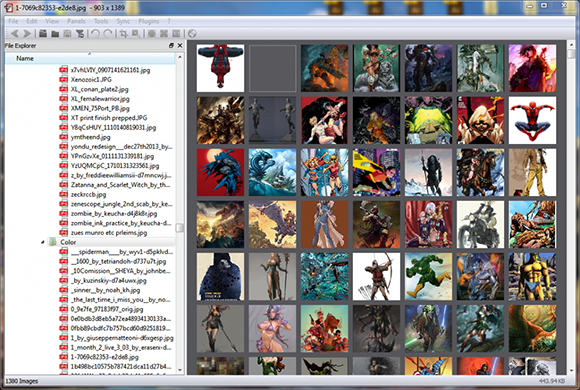

- #NOMACS IMAGE VIEWER VERSIONS HOW TO#
- #NOMACS IMAGE VIEWER VERSIONS INSTALL#
- #NOMACS IMAGE VIEWER VERSIONS SOFTWARE#
Use one of the following commands to suit the original installation method for users who no longer require the application.
#NOMACS IMAGE VIEWER VERSIONS HOW TO#
DNF Update Method sudo dnf update -refresh Flatpak Update Method flatpak update How to Remove (Uninstall) Nomacs Image Viewer Advanced users will use whatever they see fit, but this is a recommendation only, given that the tutorials focus on new users. I would recommend that newer users use the following command to check for updates to get a feel for the terminal more often.

This can come in handy if automatic upgrades malfunction, which is rare but occurs if incorrectly set up. Using the command terminal, you can use one of the update commands featured below to match your package manager installation to check manually for upgrades. Failure to do this can occur with odd issues arising, such as paths not being generated for icons.
#NOMACS IMAGE VIEWER VERSIONS INSTALL#
sudo dnf install flatpak -yįor users re-installing Flatpak, it is often recommended to reboot your system. However, still, this is the user’s discretion in choosing.įirst, re-install the Flatpak manager if it was removed previously. However, with distributions such as Fedora or similar types that focus on the latest packages, the significant advantage is often not as substantial or not present. The extra benefit of using Flatpak installations is that you will always have the most up-to-date version. The second option is to use the Flatpak package manager installed on Fedora-based systems. sudo dnf install nomacs -y Install Nomacs Image Viewer – Flatpak Method

Install Nomacs Image Viewer using the following DNF install command.
#NOMACS IMAGE VIEWER VERSIONS SOFTWARE#
In the following tutorial, you will learn how to install Nomacs Image Viewer on Fedora 36 Linux using the Fedora default repository or alternative flatpak installation manager for those that may want to use a much-updated version.įor most users, the easiest way to install the software is to utilize the Fedora repository using the DNF package manager given that Fedora focuses on the latest releases every six months and often, during that time, releases even more updates, you are generally on the latest if not one version behind in most cases making it desirable instead of using alternative package managers. It also has a pseudo color function that allows you to create false colors studies in one go with ease! Another unique feature about nomac’s software is its ability for multiple instances where it will sync up any changes made from different zoom levels or panning motions, so they match perfectly on screen at all times – making review sessions much more informative than before as well because viewers can see exactly how things changed when zooming around inside each photo frame. The imaging software also contains many features, such as it can be used to adjust the brightness, contrast, and hue of an image while maintaining saturation. You can use it for viewing all standard formats, including RAW and PSD files, by tapping on the widget with additional information such as thumbnails or histograms revealed beneath its semi-transparent surface – no need to open up another app! Nomacs is an open-source, free image viewer that supports multiple platforms.


 0 kommentar(er)
0 kommentar(er)
